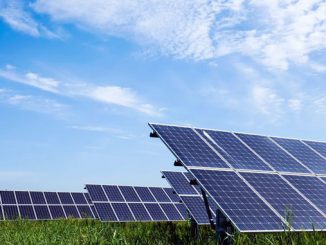
Kerala aspires to become net carbon neutral by 2050 and 100 per cent renewable energy-reliant by 2040. It is a front runner in green hydrogen adoption and has already kick-started international partnerships, research and pilot projects on green hydrogen across various sectors. At the fifth edition of the “Green Hydrogen in India” conference organised by Renewable Watch, Narendra Nath Veluri, chief executive officer, Agency for New and Renewable Energy Research and Technology (ANERT), expressed his views on the emerging trends and developments in the green hydrogen segment in Kerala. He discussed the potential avenues for development, global partnerships, key incentives offered by the state and the outlook for green hydrogen. Edited excerpts…
It is estimated that Kerala has 8,600 MW of renewable energy potential, but at present only about 10 per cent of this is being utilised. The Kerala State Electricity Board (KSEB) and ANERT have proposed to achieve 33 GW of installed clean energy capacity over the next five years (2022-27). Kerala possesses a unique enabling ecosystem to establish itself as a global green hydrogen hub, given its ideal location for green hydrogen production. High rainfall, solar insolation, a sound wind potential as well as the presence of water bodies for floating solar power generation are key advantages offered by the state.
As a green hydrogen hub, Kerala can serve the mobility, refineries, fertiliser and shipping sectors as well as become a strategic export hub through a variety of interventions such as transport, renewable power generation and green shipping using ammonia and liquid hydrogen. Given the presence of an enabling geographical, economic and policy environment, Kerala is expected to become an export hub for green hydrogen. With major ports in Vizhinjam, Kochi, Beypore and Azhikkal connected by seamless inland waterways in the west coast canal running from Kovalam to Bekal, the state also possesses the required factors to become India’s transshipment hub.
Key demand-pull factors in the state include refineries where hydrogen can be utilised for the desulphurisation of products such as diesel and petrol. Production of ammonia, a compound made of nitrogen and hydrogen, is extensively used in the fertiliser and chemical industries, such as for nitrogen-based (urea) and complex fertilisers like di-ammonium phosphate. Moreover, there is immense potential for the use of ammonia as a hydrogen carrier and fuel in shipping. Hydrogen is also the main feedstock in the production of methanol and is currently produced from natural gas in the country. Methanol is primarily used to produce various chemicals and solvents, as fuel for transport in the form of various blends, as marine fuel, and in cooking. Thus, the use of green hydrogen in methanol production is likely to be another key driver. The evolution of clean transport would also facilitate greater adoption of green hydrogen given the state’s demand for 30 kg of hydrogen per day per bus/truck. Kerala has set a target of introducing 3,000 buses, 1,000 trucks and 100 boats powered by hydrogen internal combustion engines, fuel cells and methanol. Personal rapid transit pods have been planned for 10 cities to function as the feeder network for the Kerala Rail Development Corporation (K-Rail) and for last-mile connectivity. Additionally, an important use case for hydrogen exists in its blending with natural gas and LPG. Finally, hydrogen-power is another way to provide storage and flexibility using fuel cells.
Key incentives proposed
The Kerala Draft Green Hydrogen Policy, 2023 has introduced several features to incentivise the uptake of green hydrogen. These include:
- Open access: Green hydrogen/Green ammonia plants will be granted open access for sourcing renewable energy within 15 days of receipt of an application complete in all respects.
- Exemption from charges: The policy proposes a 50 per cent exemption from wheeling charges, a 50 per cent exemption from intra-state transmission charges and a 100 per cent exemption from cross-subsidy surcharge.
- Banking: It shall be permitted for a period of 30 days for the renewable energy used in making green hydrogen/green ammonia.
- Connectivity: Connectivity at the generation end and the green hydrogen/ green ammonia manufacturing end as well as to the transmission and distribution network shall be granted on priority.
- RPO compliance: Renewable energy consumed for the production of green hydrogen/green ammonia will count towards the renewable purchase obligations of the consuming entity.
- Aggregation of green hydrogen demand: In order to achieve competitive prices, ANERT may aggregate demand from different sectors and invite consolidated bids for procurement of green hydrogen/green ammonia through any of the designated implementing agencies.
- Floating solar projects: Plots will be allocated on a long-term lease basis on water bodies, reservoirs, uncultivable farmlands flooded with saline/brackish water, etc. to developers for setting up floating solar power projects.
- Creation of land bank: Rs 3 billion has been earmarked in the 2023-24 state budget for procuring land along the west coast canal waterways and Rs 10 billion has been earmarked for land acquisition activities for developing an industrial and infrastructure investment corridor around the Vizhinjam international seaport.
- Viability gap funding/Grant/Equity Support: Rs 2 billion has been announced in the 2023-24 state budget for setting up green hydrogen hubs in Kochi and Thiruvananthapuram over the next two years.
Ongoing proposals for global cooperation
Kerala has several proposals in the works to enable it to become a global green hydrogen hub. These include:
- Kochi Green Hydrogen Hub (KGH2) by IH2A: The proposal envisages potential capital expenditure of $575 million, to build a green hydrogen plant with a capacity of 60 tonnes per day. The plant will include a 150 MW electrolyser and storage infrastructure which would enable it to achieve gigawatt scale in the long run. The plan focuses on the transport use case in the first phase, aligning with the state government’s plans for zero-emission transport, to power hydrogen-ICE retrofitted bus fleets of 60 buses and build the required infrastructure. In the second phase, industrial demand for green hydrogen from refineries, and fertiliser and chemical plants is expected to drive capacity expansion and scale up the KGH2 hub.
- Green hydrogen valleys: The Department of Science and Technology, Ministry of Science and Technology, has invited proposals to set up hydrogen valleys under Mission Innovation scheme to demonstrate how the entire value chain of hydrogen as an energy vector can be integrated into one system. Kerala aspires to develop two green hydrogen valleys in Kochi and Thiruvananthapuram.
- MoU with Port of Rotterdam: The department of ports, government, of Kerala, entered into an MoU with Port of Rotterdam in October 2017 the explore the possibility of cooperation in ports, logistics and related projects. The MoU shall be renewed to explore green hydrogen opportunities.
- Exploring partnership with Hamburg Port Authority to set up a hydrogen hub at Kochi: Hamburg port, known as Germany’s Gateway to the World, is its largest seaport by volume and a public sector institution. In terms of TEU throughput, Hamburg is the third-busiest port in Europe and a potential partnership may result in further streamlining the hydrogen economy of Kerala.
- Exploring possibility of using peat gas for conversion to grey hydrogen or power generation with carbon capture technology: Areas of biogenic gas accumulation at depths of 5 m and 17-22 m at two study areas of Alappuzha peatlands in south-west India are being explored.
Outlook
The state has taken a number of initiatives in recent years to become a front runner in the adoption and production of hydrogen. Travancore Cochin Chemicals (TCC), a public sector firm, aims to be a major hydrogen supplier. It has a chlor-alkali unit which generates hydrogen as by-product of the production of caustic soda. Hydrogen from TCC has been identified as cost-effective enough to meet the need of hydrogen fuel cell buses in the state. The hydrogen acquired from TCC will serve both water transport vessels linked to the Kochi metro and public transport vehicles.
Further, the Vytila Mobility Hub will host a major hydrogen dispensing station. Ten feeder hydrogen buses are also planned for the public transit system connecting the Kochi metro. Additionally, CSL has partnered with KPIT Technologies Ltd. to build the country’s first indigenous hydrogen fuel electric vessel. Other than this, BPCL and Air Products are exploring low-carbon hydrogen production at the Kochi refinery.
The state will facilitate green hydrogen hub-related investments in around 1,100 acres of NTPC’s land at the Rajiv Gandhi Combined Cycle Power Plant, Alappuzha, fueled by imported and indigenous naphtha, where NTPC is seeking state assistance for green investment. A 92 MW floating solar power plant has been set up on the lake adjacent to it and will serve as an ideal hub for green hydrogen development.
Kerala plans to roll out a slew of incentives for green hydrogen investors. It has a comprehensive policy on renewable energy and green hydrogen generation. Key incentives and promotions are simultaneously being formulated. For a certain MW capacity of early-bird investments in green hydrogen and associated renewable power generation in the state, banking facilities and certain relaxations on (such as wheeling charges) shall be provided.
Going forward, the state government will take a leading role in building critical infrastructure to create a robust hydrogen ecosystem and devise new policies from time to time. A centralised hydrogen storage facility will also be developed in Kochi in proximity to major consumption points.



